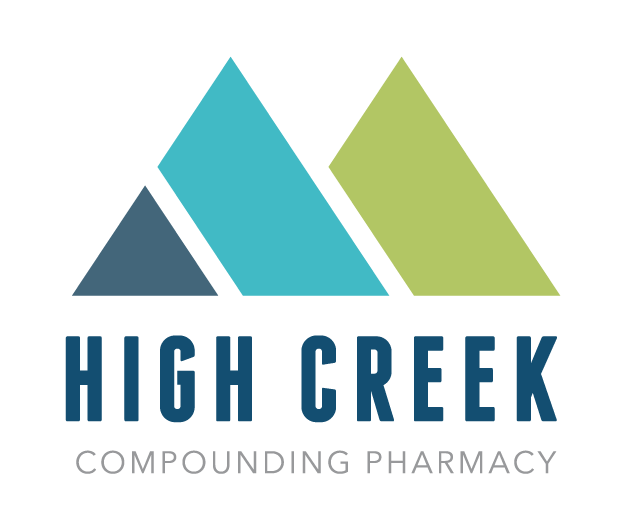
04 Jul Exploring the Different Types of Compounded Dosage Forms: Beyond Traditional Pills
In modern medicine, dosage forms are crucial in delivering medications to patients effectively and conveniently. While traditional pills have been the most common dosage form for many years, the pharmaceutical industry has made significant advancements, introducing various compounded dosage forms to cater to specific patient needs. This blog post delves into the fascinating world of compounded dosage forms, highlighting their advantages, applications, and how they go beyond conventional pills to optimize patient care.
What are Compounded Dosage Forms?
Compounded dosage forms are customized medications prepared by licensed pharmacists or specially trained healthcare professionals. In Richmond, UT, these dosage forms offer tailored solutions to meet individual patient needs, considering allergies, preferences, and specific dosage requirements. Unlike traditional pills, compounded medications are free from unnecessary fillers and additives, reducing the risk of adverse reactions. The availability of compounded dosage forms in Richmond allows healthcare professionals to optimize patient care by providing precise dosing and alternative administration routes.
Compounded dosage forms in Richmond, UT, offer several advantages over commercially available medications:
- They provide a more precise dosage, especially for patients requiring specific medication strengths.
- These medications are customized to exclude ingredients that patients may be allergic to, reducing the risk of adverse reactions and increasing patient safety.
- Compounded dosage forms can be prepared in various innovative delivery methods, making it easier for patients with difficulty swallowing pills or who prefer alternative administration routes.
In Richmond, UT, compounded dosage forms find application across various medical fields. They are particularly beneficial for pediatric and geriatric patients with difficulty taking traditional pills. Compounded medications provide alternative dosage forms, such as suspensions, troches, and lollipops, that are easier to administer to children and older adults. Additionally, compounded dosage forms are crucial in hormone replacement therapy, allowing for personalized dosing and customized formulations to meet individual patient needs.

The Advantages of Compounded Dosage Forms
Compounded dosage forms offer several advantages over traditional medications. Here are some key benefits:
- Personalized Dosages: Compounded dosage forms allow healthcare professionals to tailor the medication strength and dosage to meet the specific needs of individual patients. This is particularly beneficial for patients who require dosage adjustments or have unique requirements that commercially available medications cannot meet. Personalized dosages ensure that patients receive optimal medication for their condition, improving treatment outcomes.
- Customized Formulations: Compounded medications can be formulated to exclude certain ingredients that patients may be allergic to or have sensitivities towards. By eliminating unnecessary fillers, dyes, or preservatives, compounded dosage forms minimize the risk of adverse reactions and improve tolerability. This is especially important for patients with allergies or sensitivities to commonly used additives in commercial medications.
- Alternative Administration Routes: Compounded dosage forms offer a variety of alternative administration routes beyond traditional pills. For patients who have difficulty swallowing pills, compounded medications can be prepared as suspensions, troches, transdermal patches, suppositories, or even lollipops. These alternative forms make it easier for patients, including children and the elderly, to take their medications and improve compliance.
- Combination Medications: Compounded dosage forms allow combining multiple medications into one document. This mainly benefits patients requiring multiple medications to manage their conditions. Combining medications into one formulation simplifies the dosing regimen, improves convenience, and enhances medication adherence.
- Access to Discontinued Medications: Commercially available medications may sometimes be discontinued for various reasons. Compounding pharmacies can often recreate these medications using the same active ingredients, ensuring patients can continue receiving the treatment they need even when the commercial product is no longer available.
- Pediatric and Geriatric Care: Compounded dosage forms are especially advantageous in pediatric and geriatric care. Pediatric patients often have difficulty swallowing pills, and compounded medications can be formulated as liquids, suspensions, or flavored dosage forms to facilitate administration. For the elderly, compounded dosage forms can be customized to meet their unique needs, such as modified doses or alternative routes of administration.
Types of Compounded Dosage Forms
- Topical Creams and Gels
Topical compounded dosage forms are applied directly to the skin, providing localized treatment. These formulations are commonly used for pain relief, anti-inflammatory, and dermatological conditions. The versatility of topical creams and gels enables healthcare professionals to tailor the medication to suit the patient’s needs, including varying strengths and combinations of active ingredients.
- Sublingual and Buccal Formulations
Sublingual and buccal compounded dosage forms are administered under the tongue or in the cheek’s pouch. These routes of administration allow medications to bypass the digestive system, leading to faster absorption and avoiding first-pass metabolism. They are often used for medications requiring rapid onset of action, such as inevitable pain and anti-anxiety drugs.
- Injectable Compounded Dosage Forms
Injectable compounded dosage forms are prepared as intramuscular, subcutaneous, or intravenous administration injections. They benefit patients who cannot take oral medications or require a specific drug concentration that is not commercially available. Injectable compounded dosage forms are commonly used in pain management, hormone therapy, and specialized treatments.
- Transdermal Patches
Transdermal patches are adhesive patches that deliver medications through the skin and into the bloodstream. These patches offer a controlled release of the medication over an extended period, ensuring consistent blood levels and reducing the need for frequent dosing. They are widely used for hormone replacement therapy, pain management, and smoking cessation.
- Troches and Lollipops
Troches are lozenges designed to dissolve slowly in the mouth, while lollipops are intricate candy forms of medication. Both troches and lollipops are convenient for children and adults with difficulty swallowing pills. They are commonly used for compounding medications like antiemetics, antifungals, and pain relievers.
- Suppositories
Suppositories are solid dosage forms that melt or dissolve when inserted into the rectum or vagina. They offer localized treatment and are often used for conditions such as hemorrhoids, constipation, and specific gynecological issues.
Applications of Compounded Dosage Forms
Compounded dosage forms find application across various medical fields, such as:
Pediatrics
Pediatric patients often face challenges taking medications due to their age and inability to swallow pills. Compounded dosage forms like suspensions, troches, and lollipops provide alternative administration options for children, improving compliance and ensuring accurate dosing.
Geriatrics
The elderly population frequently deals with complex health issues and multiple medications. Compounded dosage forms help address issues like polypharmacy, dosage adjustments, and swallowing difficulties, enhancing medication adherence and reducing the risk of adverse effects.
Hormone Replacement Therapy
Hormone replacement therapy often requires personalized dosage forms and precise dosing. Compounded dosage forms, such as creams and gels, allow customized hormone therapy to meet individual needs and optimize treatment outcomes.
Safety and Regulation of Compounded Dosage Forms
Compounded dosage forms have gained popularity due to their ability to provide personalized medication options and customized dosages that cater to each patient’s specific needs. However, it is crucial to prioritize safety and comply with regulations when utilizing compounded medications. Patients should only obtain their medications from licensed compounding pharmacies that adhere to stringent quality control standards, ensuring the highest quality and safety. Collaboration between healthcare professionals and compounding pharmacists is essential in determining the appropriate formulation, dosage, and monitoring for optimal patient outcomes. This collaborative approach ensures patients receive a treatment plan tailored to their unique needs, resulting in the most effective results.
Patients must actively communicate with their healthcare providers about any concerns or side effects they may experience while taking compounded medications. Open communication allows for ongoing evaluation and adjustment of the treatment plan as needed, ensuring the best possible care and outcomes for patients relying on compounded medications. By following these guidelines and working closely with healthcare professionals, patients can benefit from the advantages offered by compounded dosage forms while maintaining their health and well-being. It is important to note that compounded medications may not be suitable for every individual, and it is always recommended to consult with a healthcare professional before starting any new medication regimen.

The Future of Compounded Dosage Forms
In recent years, compounded dosage forms have gained significant attention and are poised for a promising future due to advancements in pharmaceutical technology. As the demand for personalized medicine continues to rise, there is an increasing need for dosage forms that can be tailored to meet the specific requirements of individual patients. These cutting-edge technologies offer numerous advantages and benefits. For instance, they can enhance the effectiveness of drugs by improving their solubility and bioavailability, leading to better therapeutic outcomes. They also enable the development of complex formulations that were previously unattainable, allowing for more precise dosing options.
Furthermore, these advancements in pharmaceutical technology can improve patient compliance with treatment plans. By offering customized dosage forms that are easier to administer and more convenient for patients, it becomes easier for them to adhere to their prescribed medication regimen. Overall, the future of compounded dosage forms holds great potential in addressing the evolving healthcare needs of patients. These advanced technologies can improve patient care and outcomes by providing tailored solutions for their medical conditions. With ongoing research and development in this area, we can expect even more breakthroughs in compounded dosage forms in the coming years.
Conclusion
In conclusion, exploring the different types of compounded dosage forms beyond traditional pills offers patients a world of personalized medication options. High Creek Pharmacy in Richmond, UT, understands the importance of tailored treatments and provides a wide range of compounded dosage forms to meet individual patient needs. High Creek Pharmacy offers innovative solutions to enhance medication efficacy and patient convenience, whether topical creams and gels, sublingual and buccal formulations, injectable medications, transdermal patches, troches, lollipops, or suppositories. Contact High Creek Pharmacy today to discover how compounded dosage forms can optimize your healthcare experience and provide customized medication solutions beyond traditional pills.

No Comments